Human shooting competition, millions of victims of mindless crime, thousands of hands cut off for disobedience. This was the everyday life of the 19th-century Congo. A country where impunity has turned people into monsters.
The colonies conquered by Europeans were often characterized by a brutal regime. But nowhere have such horrible atrocities occurred as in the Belgian Congo. In few areas of the world so many people have lost their lives. Behind everything was a man whom history would later describe as the first genocide in history. It was the King of the Belgians, Leopold II Koburg, whose greed determined the fate of millions of lives.
King of the Belgians
Leopold did not have to make a special effort for the Belgian throne. He was the second child of King Leopold I and Louis Marie of Orleans. Originally, the heir to the throne was to be Louis Philippe - the first son of the royal couple. However, as a result of the disease, the child died less than a year after being born.
Leopold was born after his brother's death and it was he who, at that time, the only male descendant of the royal couple, was to take the Belgian throne in the future. The future successor was interested in politics from an early age. He dreamed of subjugating the Netherlands to Belgium and seizing its colonies. It was the will to colonize that aroused his greatest interest. He assumed power after his father's death in 1865.
As Leopold II, however, he quickly realized that his rule would not be fully independent. Belgium was a constitutional monarchy and every most important decision of the king had to be consulted with the government and parliament. Meanwhile, these institutions did not always want to support the ideas of the greedy ruler. Nevertheless, during the reign of Leopold II, Belgium became one of the industrial powers of the contemporary world.
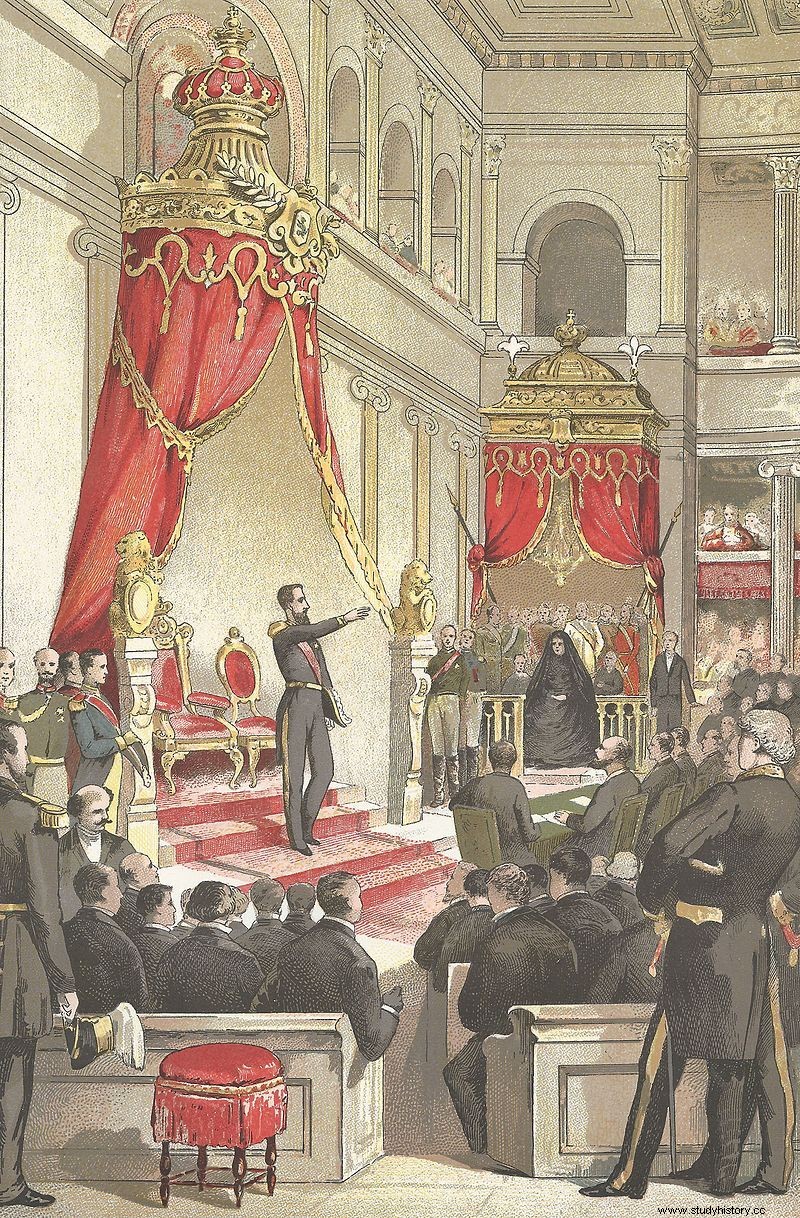
Leopold II took the Belgian throne directly after his father. Despite the brutal colonial policy, a large number of Belgians still respect and sentiment him, erecting new monuments for him. Painting by Ghémar Frères "Ascension of Leopold II to the throne".
At the end of the king's reign, as many as 7 million people lived in this small country. This was twice as much as in 1830. The country invested in new energy sources and modern industry. However, this was not enough for Leopold II. The more that he failed to implement the war plans towards the Netherlands. Thus, although the king undoubtedly contributed to the economic development of his country, almost all the years of his reign are filled with another "achievement". Dark and shameful.
"Belgium must have a colony"
Ever since he came to the throne, Leopold II believed that Belgium was "a little country of little people." As a staunch supporter of imperialism, he used to say that "Belgium must have a colony." He looked at colonial powers such as Great Britain with undisguised jealousy. However, the king had a problem with acquiring new possessions…
First of all, the country did not have a fleet that could be set out in search of lands to conquer. Moreover, there were very few areas for colonization. The unfavorable conditions did not stop Leopold. His plans envisioned the occupation of Fiji, New Guinea or even a part of Abyssinia. However, the Belgian parliament stood in his way, which considered such expeditions to be too much of a financial burden for the state. The king's colonial plans seemed to be ruined. That's when he met Morton Stanley. The explorer who was talked about - as Charlie English reports in his latest historical report " The book smugglers from Timbuktu "- that " shoots at blacks as if they were monkeys " .
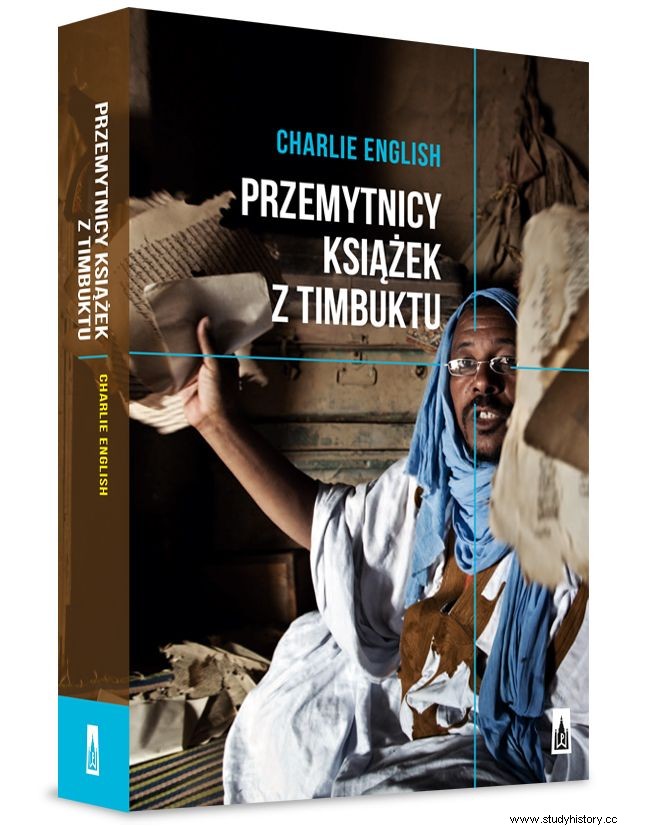
The article was inspired by the latest book by Charlie English "Smugglers of books from Timbuktu" (Poznań Publishing House 2018), in which the author interweaves the history of the African kingdom with the present, creating a story full of tensions.
Private State of Leopold II
In the second half of the 1870s, Morton Stanley organized an expedition to Congo, located in Central Africa. It was one of the few African lands that has not yet been colonized. At first, the man tried to persuade Great Britain to occupy this area. However, the country struggling with the problem of recession was not interested in allocating money to Stanley's colonization plans. Leopold II decided to take the offer.
The King of the Belgians began financing Stanley's expedition to Congo, as well as building new infrastructure in the area. Due to the lack of consent of the parliament for official colonization, Leopold II had to undertake it as a private person. He founded what he called the International African Association and began urging European leaders to recognize the union's sovereignty over the Congo. The case became so publicized that in November 1884 the Chancellor of the Reich, Otto von Bismarck, organized a special conference in Berlin. Charlie English in his latest book " Timbuktu Book Smugglers ”Described the famous meeting as follows:
Delegates talked for three months without a single African. When they parted on February 26, 1885, the International African Association was recognized as the government of the new Congo Free State, creating a framework for the plunder of that territory, and the general outline of the division of Africa was established .
Interestingly, the official organization of Leopold II was to promote the fight against the slave trade, as well as help the natives. Philanthropy turned out to be a fiction. What happened next in the Belgian Congo is one of the greatest crimes in human history.
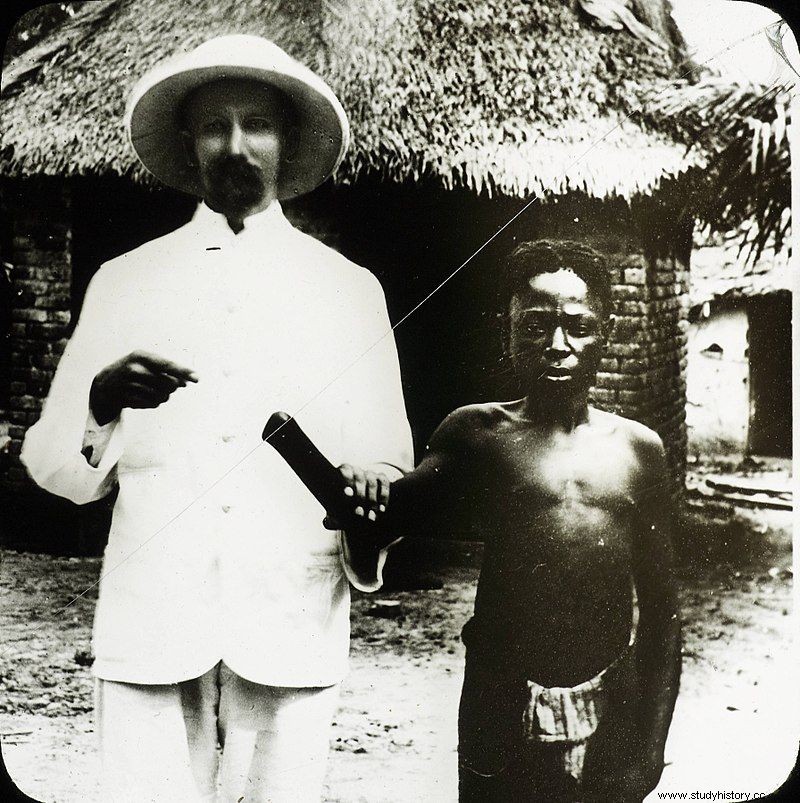
The people of the Congo Free State, of which Leopold II became sole owner, experienced a real hell. Slavery, brutality and a robbery economy have resulted in the deaths of millions of people.
Genocide
As soon as representatives of Leopold II arrived in Congo, the exploitation of the area began, combined with the most cruel treatment of the natives. The Belgians cared mainly about two products - ivory and rubber. The country began to be managed by a group of related capitalist companies.
Black people were forced to slave labor. Food rations were to be awarded for work, but they were so small that the shackled natives died of hunger and exhaustion. The Belgians have organized a brutal system of punishments for disobedience or insufficient supply of raw materials. One was to cut hands, feet, ears or nose . Photographs from Congo, depicting limbless women, children and men, have been preserved to this day.
Among black people there was also a panic fear of the so-called "Chicotte", which consists in flogging a hippo skin with a whip for the slightest offense. Attempts at desertion were punished with death, and entire villages were pacified for rebellion. Hundreds of kilometers of Congolese land presented a terrifying sight:deserted areas dotted with millions of dead bodies. Few managed to escape into the jungle where they spent the rest of their lives.
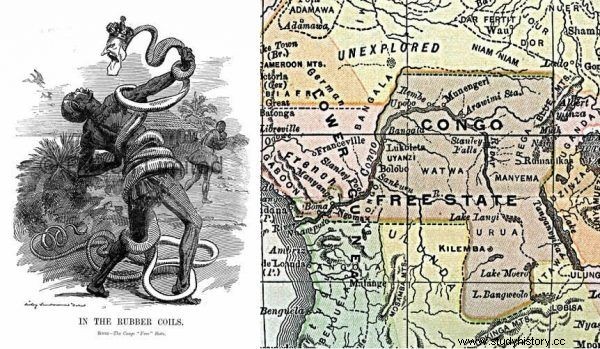
It was only in the 20th century that the crimes of Leopold II in the Belgian Congo began to be criticized. In the picture on the left, a caricature of E.L. Sambourne showing the king as a snake attacking the natives, on the right - a map of the Congo Free State at the end of the 19th century.
To implement his genocidal policy, Leopold II decided to additionally involve the blacks themselves. They were forcibly drafted into the "Force Publique" units, which were subordinate to Belgian officers. This is how Charlie English reports these actions in his latest book " Smugglers of books from Timbuktu ":
In Leopold's Congo, a private military known as the Force Publique forced the natives to strip Brussels of its land of natural resources, mainly rubber and ivory, to enrich Brussels. If imposed quotas were not met, men were killed, women were raped, children were mutilated and villages were burned. The death toll in the region as a result of Leopold's reign has been estimated at ten million, or roughly half the country's population .
Impunity turns people into monsters
Over time, the arbitrariness of the Belgians favored pathological behavior - even competitions in shooting at people appeared. One of the colonizers ordered to cut bushes in his garden in such a way as to be able to target black passers-by from the window . Many more of this type of relationship has survived. Although Leopold II himself has never been to the Congo, this does not absolve him from responsibility for the perverse atrocities committed by his subjects.
Reports on the slaves ran to the king's desk and contained information about the murders and the tortures used. The other countries pretended not to see the genocide taking place in the Belgian Congo. With time, however, one man appeared who decided to react - Edmund Morel.
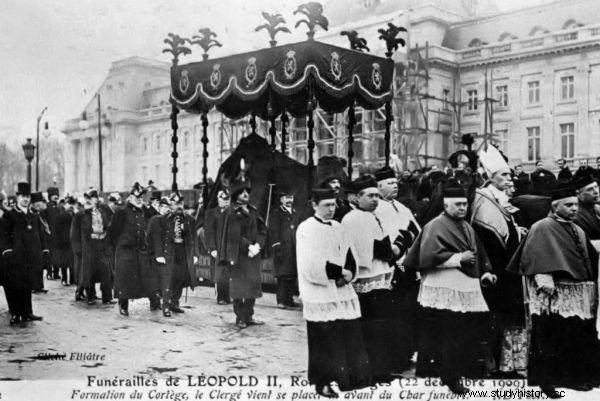
Leopold II died in 1909, and the Belgian crown passed into the hands of his nephew. The funeral procession (pictured) with his body was booed by the crowd. The king ruled for 44 years, the longest in Belgium's history.
This British journalist and human rights defender stubbornly informed the public about the slaughter of blacks. He also organized the first protests and started a social movement to end the murders in central Africa, especially in the Belgian Congo.
Leopold II died in 1909 and the impunity of the Belgians was limited. However, colonial exploitation in this area continued for decades. It was only in 1960 that the independent Democratic Republic of the Congo was established. The effects of the genocide during Belgian rule are felt there to this day, and the crime itself left an imprint on the memory of local residents.
The remarkable history of the African kingdom, where the past is intertwined with the present:

